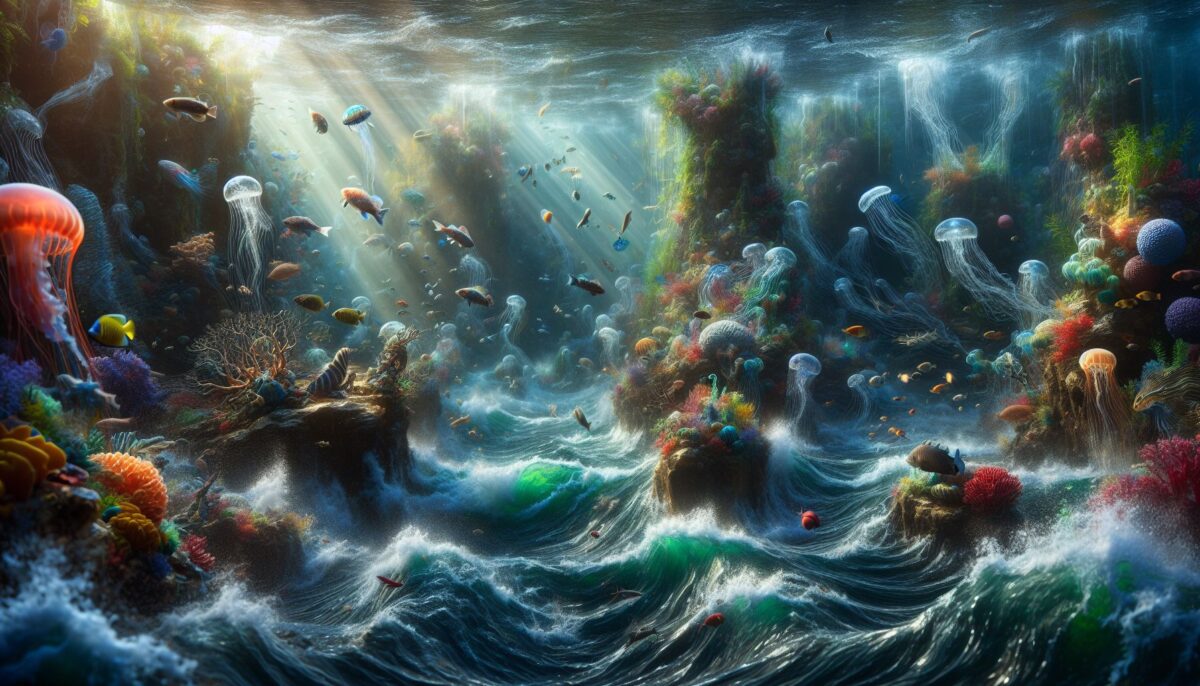Coastal currents are a remarkable aspect of our oceanic world. As part of a vast global system, they influence climate, marine life, and human activities. Along coastlines, they deposit sediments that shape the contours of our shores, connect niches of life across distance and depth, and influence the local atmospheric temperature around coastal communities. Consequentially, fluctuating currents have a knock-on effect on complex marine ecosystems, the safety of maritime navigation, and the efficiency of offshore drilling operations.
Getting Into the Flow: What Are Coastal Currents?
Coastal currents are part of the ocean’s larger circulation system, powered by wind, tides, and differences in water density. They are generally classified into two types: longshore and rip currents. Longshore currents flow parallel to the shore, propelled mostly by waves hitting the shoreline at an oblique angle. Meanwhile, rip currents form as fast-moving narrow streams perpendicularly moving away from the shore, often at high speeds.
These oceanic flows exist as part of a much vaster and interconnected global current network. This complex system, known as the Ocean Conveyor Belt, connects our lakes, seas, and oceans into a single flowing entity – sustaining marine ecosystems, shaping our climates, and stirring life beneath the ocean’s surface.
Current Situation: The Role of Coastal Currents In Ecosystem Health
Coastal currents are an essential conveyor belt for nutrients in the marine ecosystem, with significant implications for marine biodiversity. First, changes in current flow can lead to upwelling, a phenomenon where deeper, nutrient-rich waters rise to the surface. Upwelling zones are hotspots for plankton growth, attracting various marine organisms and providing rich fishing grounds.
Furthermore, currents carry away waste and pollutants, decluttering the waters and supporting healthier marine environments. However, it is also this ability of currents to transfer debris and pollutants that can notably contribute to the spread of marine pollution.
Unpredictable Tides: Real-world Implications
The dynamics of coastal currents directly impact human activities. Its alterations affect maritime trade, commercial and recreational fishing, coastal erosion, and even the spread of pollutants or oil spills from offshore drilling.
For offshore operations, predicting currents is crucial. These industries base their activities on current predictions to increase productivity and ensure safety. Similarly, forecasting the strength and direction of currents allows for safer navigation for ships, reducing risks of collision or grounding.
Towards Blue Economies: Harnessing the Power of Coastal Currents
Rapid advancements in technology hint at a future where the inherent energy in our oceans can be harnessed. Scientists believe that ocean currents could become a significant component of the ‘blue economy,’ providing renewable energy and sustainable economical gains.
One of these emergent technologies is tidal energy. It generates power by using the kinetic motion of tidal currents. Though still in its infancy, this technology offers immense potential.
Current Affairs: The Future of Coastal Currents
Climate change is causing rapid alterations in existing current patterns. Therefore, the future will require concerted efforts to understand the impacts of these shifts on our coastal environments and societies.
Through it all, the importance of conservation cannot be overstated. Despite existing challenges, Marine Protected Areas are an essential tool to safeguard critical habitats from further decline. More than just a factor of marine ecology, coastal currents are also becoming recognized as variables in global climate models.
Conclusion
Coastal currents are far more than a scientific curiosity; they are an essential part of life on Earth. Their influence stretches from the bottom of the ocean to the tops of mountain ranges and influences nearly every aspect of life in between. As we continue to unearth the mysteries and complexities of these hidden highways of the sea, efforts to understand and conserve our precious oceans become that much more critical.
To survive and thrive in this increasingly changing world, we must continue to explore, understand, and protect the delicate balance that coastal currents play in our shared Earth.
References:
1. Understanding Coastal and Ocean Currents
2. Climate change and Coastal Currents
3. Marine Protected Areas
By diving deeper into these topics, everyone can improve their knowledge of our planet’s water systems and partake responsibly in their preservation and sustainable use.

